Rishad Tobaccowala's Blog, page 19
July 3, 2022
On Books,

The author of this post loves books and reads at least one a week.
All of them in analog form which are marked and underlined using a very special instrument( Faber Castell pencil )and then the best lines are copied by hand using a decades old Mont Blanc pen onto parchment paper in leather bound notebooks to be re-read at a date in the future.
The reverence for books extends to their habitats such as bookstores (and the Chicago Seminary Bookstore on the University of Chicago campus is one of the finest bookstores in the United States if not the world) and libraries as sanctuaries.
Every line in this post about books, bookstores and libraries are a conflation of the lines I have copied over the years. Not one of them are my own. All I have done is combined them into new arrangements to reveal how sampling books alone can create something interesting on any topic which in this case is books, bookstores, and libraries. Everything italicized is literally someone else’s sentences or paragraphs and if this was a published book my editors would have me hunt down and attribute every quote. Please bear with me for not doing so in putting together this piece but do note that almost everything about bookstores is from “In Praise of Good Bookstores” by Jeff Deutsch who runs the Chicago Seminary Bookstore.
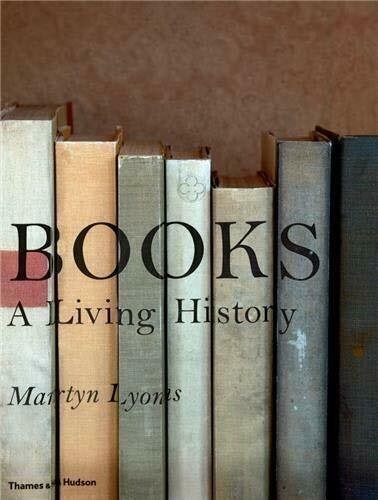 Books.
Books.The book has proved one of the most useful, versatile, and enduring technologies in history. It’s portability, ease of reference and ability to concentrate a large amount of data made it indispensable. It is difficult to imagine how some of the greatest turning points in history would have been achieved without it.
Life without books would be a mistake.
One is twisted into a more complex shape when reading a great book.
Books give me “me”
The best books are like surgeons. They change you but you do not remember them, and they leave no external mark. Drugs get flushed from our system but not the best stories. One story can change you because it a sequence of language that produces a chemical reaction in the body.
Books are ways to escape ourselves. They are another form of dreaming. They are the magic of using black marks on a white page to conjure people and place out of nothingness. They are the closest we will be to becoming someone else or living someone else’s life.
When a story is told it is not forgotten. It becomes something else. A history of what we were. A hope of what we can become. They traverse across time and space like a phrase drifting down the centuries to reach someone in their Michigan classroom.
Stories are data with a soul.
We undervalue books. Many people who would think nothing of spending $17 on a couple of lattes and some baked goods, bristle at spending the same amount for a copy of a book that might provide untold hours of reflection and unquantifiable fulfillment.
A book is a gift. A commodity has value, and a gift does not. A gift has worth. Value is the comparison of one thing with another. Worth is something that we prize but we cannot put a price on.
The most important things in the world seem to be impossible to measure whether it be meaning, knowledge, curiosity, beauty, kindness, justice, wisdom, and love. And books.
If it is wisdom alone that makes the price of books (and wisdom is an infinite treasure for humans,) then the the value of books is unspeakable…
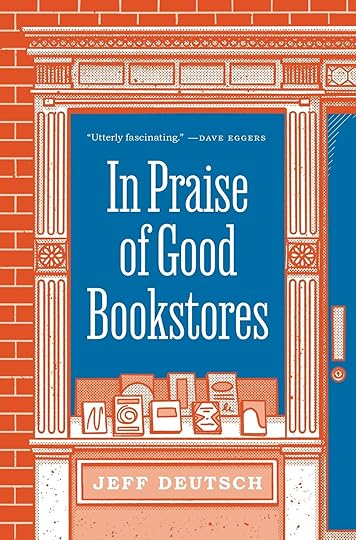 Bookstores.
Bookstores.The good bookstore sells books, but the primary product, is the browsing experience.
One of the great benefits of browsing is the rumination it evokes.
Browsing is a form of idleness that energizes just like there are forms of productivity that are wasteful.
Every good bookstore allows the reader to get lost in it.
A great bookstore is a total environment, where nothing except books seem to exist fully, where everything else is either not important or already in the books.
Great bookstores curate, convene and focus on community to separate themselves from their digital counterparts.
They understand that the book with which one was familiar was not, in most cases, the book one needed. It was the unknown neighbor on the same shelf that contained the vital image.
Books have destinies as objects and people appointments with them. And bookstores bring them together.
How many books must ripen on the shelf before we are ready for them?
Bookstores are scarce because we undervalue them, and good bookstores are scarce because we undervalue our cultural wealth.
 Libraries.
Libraries.The library as institution is ancient. Dating back thousands of years though Egyptian, Greek, Persian and Roman history, the first libraries were primarily archives for storing information. Whereas the classical library was exclusive and catered to the privileged classes, the modern library is inclusive and accommodate all. Hence it is said the library of the future will break down the barriers further. This is an interesting task for the architect to design a building that defines conventions and looks to the future.
The rules of libraries:
Books are for use.
Every reader his or her book.
Every book its reader.
Save the time of the reader.
The library is a growing organism.
A great bookstore or personal library has cherished the thing of the mind; it has insisted on including all points of view, but it has been selective.
Every day from the library a book is borrowed and whether in the reading room, the bus home or in a coffee shop a discovery will be made with something in the book and each reader will find such epiphanies, such enrichments of mind and changes of heart can be the stuff of every day…
In the ideal world every person would possess their own library. The walls of each home would only seem to be made of books; wherever one would look one would only see spines: because every real book is a mind, an imagination, a consciousness. Together they compose a civilization or even several. And a library is an archive of personal history where returning to a book after years and looking at the lines you underlined you discover how you may have both remained the same and changed over the years.
The book does not change but you do and they help you mark the passing of time and the changing of you.
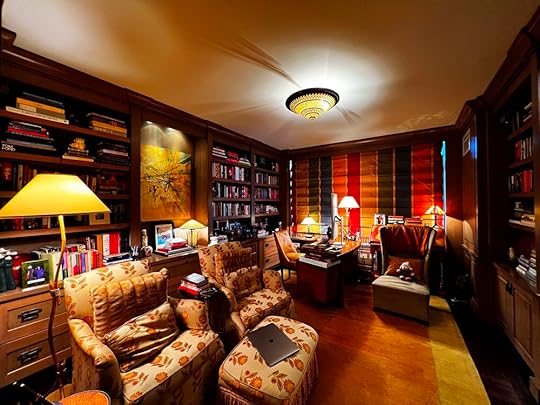 The “thingyness” of books.
The “thingyness” of books.Books have a “thingyness” to them. One you can feel, hold and smell.
There is much to be gained by eBooks: ease, convenience, portability. But something is lost: tradition, a sensual experience, the comfort of thingy-ness — a little bit of humanity.
We shall not understand what a book is and why it has value if we forget how important to it is its body, the building that has been built to to hold its lines of language safely together through many adventures and a long time. Words on a screen have a visual quality to be sure but they have no materiality, they are only shadows and when the light shifts they will be gone. Off the screen they do not exist as words. They do not wait to be reseen, reread, they only wait to be remade, relit. One cannot carry them beneath a tree or into a side porch. One cannot argue with them in their margins; One cannot enjoy the memory of their dismay, when perhaps after years, they return to a treasured copy of a book to find the jam they inadvertently smeared there…
Another “thingyness” of books is how you feel after you spend an hour with a good book compared to the conveyer belt of distractions that we scroll through on our digital devices which have been algorithmically optimized to maximize someone else’s objective.
One often leaves you empty or enraged while the other leaves you uplifted and enhanced.
Upgrade your mental and emotional operating system.
Read.
A book.
June 26, 2022
On Leadership.

Art by Ai Weiwei
Four decades of experiencing, observing and reading about leadership has revealed these six skills/behaviors displayed by world class leaders:
Embrace Reality: Leaders acknowledge, face and communicate reality.
Engender Followership: Understand that people follow people and not titles since titles are bestowed while leadership is earned.
Strive for Excellence: The best leaders have a passion for excellence.
Build People: They are builders of people as much as they are of business.
Growth mindset: World class leaders are committed to constantly upgrading their and their companies’ skills, craft and knowledge.
Inspirational Storytellers: They go beyond math to meaning. They integrate spreadsheet and story.

Art by Ai Weiwei
The best leaders acknowledge and encourage the surfacing of facts regardless of how challenging.A key to leadership is to solve challenges and address problems.
This requires confronting issues versus looking away or hoping some form of magical thinking will make them go away.
One cannot hope to get people to follow if they suspect one is not addressing real issues and challenges however difficult they may be.
Leaders embrace data and know math matters.
They accept that facts are stubborn things.
And while it may be forestalled for a while truth has a habit of breaking in.
Facing hard facts and addressing reality does not mean defeat or pessimism. But it is the first step in making things better.
To have a solution one must understand the problem.
This often requires creating an environment where people feel free to call out the problem and note that the brown moist thing that everybody is staring at around the conference table or on the Zoom screen is not a brownie but a turd.
Great leaders acknowledge mistakes. They know they do not have all the answers. This means they are open to criticism and correction, and they surround themselves with skill sets that offset and balance their areas of weakness.

Art by Ai Weiwei
Leaders engender followership.Without the hearts and minds of those they manage one is not a leader but a ruler.
Rulers leverage fear, project power and exploit insecurity.
Employees genuflect, fall in line, salute and pander to the feared boss, while they silently seethe, create an array of plans to resist by slow walking decisions, plot insurrection or practice defection.
People follow people and not titles.
By being approachable, reasonable and empathetic a leader engenders followership.
And most importantly they do so through integrity.
They earn this trust by not only be fact driven but being clear and intentional about their goals and transparent about how they expect to get there.
Leaders say…
Here is where we are going.
Here is why we are going there.
And here is how we are going to get there.
If you have better ideas or concerns say so.

Art by Ai Weiwei
The best leaders build people and not just businesses.Every good leader has many other leaders that work for them, have worked for them or want to work for them.
Leadership is not a zero sum gain of one person winning and another losing but a game of abundance where everybody learns, grows and challenge each other by continuously reaching higher and delegating more and more to others so they can take on new challenges and opportunities.
An art that builders of people have mastered is that of feedback. Specifically, how to provide input on how one can overcome challenges, correct mistakes and grow as people. The best do so in ways that combine truth and sensitivity that get people to believe in both their need to change combined with the belief that they can!
When looking for a leader ask them how many leaders they have built.

Art by Ai Weiwei
Leaders exemplify excellence.They set high standards for quality of product and service delivered, financial results and what they expect of people around them
Excellence is what attracts customers, talent and financial results.
And helps create world class cultures.
They sweat the details and expect others to do so and measure themselves against aspirational benchmarks.

Art by Ai Weiwei
Growth Mindset.The best leaders never stop growing.
They are continuously learning and honing and upgrading their craft.
They do and do not just manage.
They seek not to blame but to understand, to learn versus believing they know it all.
They realize that only if they grow and the people around them grow in skills, reputation and knowledge will the company and its customers and clients grow.
They invest in learning, taking bets on the future, challenging existing business models, looking outside their categories for inspiration and potential disruption.

Art by Ai Weiwei
Inspirational Storytellers.In today’s highly networked environment where much is expected by companies from multiple stakeholders the ability to communicate with clarity, nuance, understanding and authenticity has become even more critical.
The math, data and the spreadsheet are key tools every leader leverages.
But they know that people choose with their hearts but then use numbers to justify what they have done.
Leaders find ways to resonate and inspire through their writing, their videos, their in-person group and individual communications by infusing the facts of math and spreadsheet with the feelings of meaning and story.
Leadership is accessible to everybody.
Most of the traits of a leader can be honed without being a “boss”.
One does not need to have people reporting to them or reaching a certain level of seniority or seasoning to a) work at honing one’s craft in the light of excellence, b) helping other people, c) spending time learning everyday d) building one’s writing and presentation skills and e) always being clear about one’s intentions and goals and transparent about the plan to get there.
June 19, 2022
Guiding Lines.

It is the time of the year where students graduate from high school and university.
Convocation speakers inspire and illuminate.
Life lessons are shared and imparted.
Here are some lines that have served as guides over the years.
 1. Success is being able to spend your time in the way that creates joy.
1. Success is being able to spend your time in the way that creates joy.Success is sought by all but what is being sought?
For some it is making a mark in their field or leaving some enduring work. For others it is seeking financial wealth or creating and nurturing a family. For some it is helping others.
For most people success also means a measure of happiness.
In the end if time is all that one has than success probably has to do with how one uses time.
Ann Dillard wrote that “the way we spend our time is the way we spend our lives”
When one is financially constrained one’s mind and time are colonized by making ends meet.
When one is physically in pain or suffering from ill health it is often hard to be happy.
So, if happiness is the ability to not spend time thinking all the time about ones financial or physical situation it means a certain amount of financial and physical well-being is key to being happy and possibly successful.
Sooner or later once these basics of not having to worry about the next rent check or waking up the next day are overcome the words and emotions that link the happy and successful are those of purpose, meaning, connection, flow, recognition and growth.
And these can change over time and are different for different people.
But it all comes down to having the freedom to allocate one’s time the way one does.
How do you want to spend your time, and can you increasingly get to a place where you spend more of it in ways that give you joy?
 2. “Do not price yourself out of your dreams.”
2. “Do not price yourself out of your dreams.”It has been written that it Is “never too late to become what you are” but for many people by following the wrong star home they lose their way or spend most of their lives not being who they are.
The ability to control one’s time is inversely related to how much time one must do things to pay the bills.
Lower expenses lead to more options.
Increasing one’s options by limiting one’s possessions and way of living tends to lead to more success than maximizing one’s possessions which forces one to do work that one does not particularly enjoy or work with people that one does not resonate with in order to make ends meet.
Doing things that you resonate with and gets one into a flow is not only great for being happy today, but it is often a key to becoming an expert, a master and a leader in what one does.
To thrive you flourish by spending time at what you are good at and has you in a state of flow.
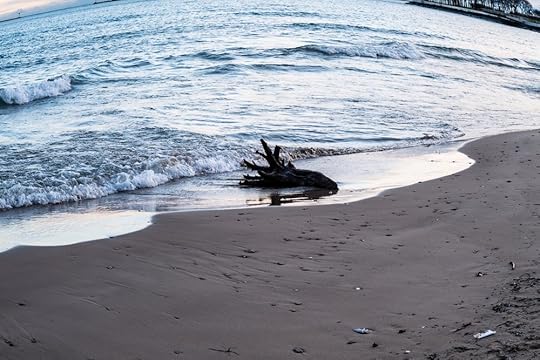 3. “Do not live in other people’s minds”.
3. “Do not live in other people’s minds”.It has been written that “comparison is the thief of joy” but so is living one’s life to score points in somebody’s else’s scoreboard of what success is.
The rise in mental anguish among teenagers is in part how social media has accentuated the need to look good in somebody else’s eyes.
But it is not just teenagers who live in other people’s minds versus theirs.
Caring what other people think is human and often learning and getting feedback on how one can improve is key to success so not living in other people’s minds does not mean listening to or caring what other people say or think.
It means stopping using their metrics and their rulers of success to rule the way you live one’s life.
It is like giving somebody else a remote control to the direction of your life.
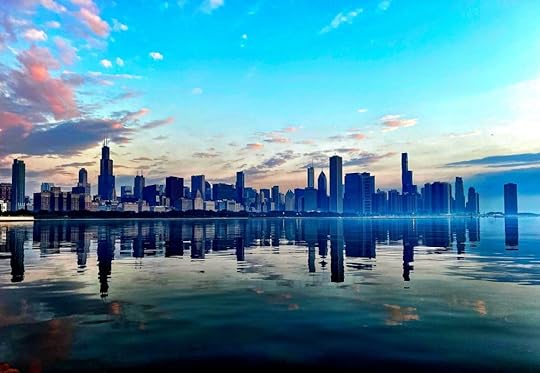 4. “There is nothing good or bad but thinking makes it so”
4. “There is nothing good or bad but thinking makes it so”While one may not agree with Hamlets’ statement that “there is nothing good or bad but thinking makes it so”, our mindsets matter a lot in how we perceive life, how we are perceived and the degree of success we may have in our varied endeavors.
In rapidly changing and chaotic times an agile mindset can be critical to success. While there are many personal trainers to help sculpt our bodies into somewhat supple forms, there is a scarcity in those who can show us how to exercise our minds to be as flexible as they need to be.
Mindsets matter.
Growth mindsets. Learning mindsets. Optimistic mindsets. Realistic mindsets.
Optimism matters.
In the novel “Gravity’s Rainbow” by Thomas Pynchon a character is described as one whose “mood collapsed the room”.
While misery may love company, nobody likes being in the company of miserable people. Optimism is not just an essential component of innovators but a trait that you must have if you wish to inspire folks to follow you. “Woe is me, doomed are us” works for a few drinks in a bar, but at the workplace it saps energy, hurts culture and is just a plain downer. Pessimism is something we all wallow in, but it fails to show the way out.
A way to get optimistic is to forget all the legacy nonsense you may have to grapple with and ask that if you had a fresh sheet of paper, a subset of the talent in your firm and its assets (brands, network, money), what would you do? You likely will find you are looking forward to what you and your company can do. Every day is a new career beginning. Tomorrow is where we will spend the rest of our lives.
 5. “Practice Compound Improvement”.
5. “Practice Compound Improvement”.The single most powerful concept in finance is that of compounding.
Compounding interest and compounding returns can over time create wealth or lead one to bankruptcy depending on whether you owe or own capital.
In a world of change we all may want to consider another way compounding can help us grow in changing times and drive mental, emotional, and even financial wealth which is compounding improvement.
There is so much we cannot control in a world driven by global, demographic, social and technological change but instead of being buffeted about helplessly in a sea of chaos maybe we can try to control and build our ourselves to be better.
Three learnings about compound improvement.
a) Discipline equals Freedom: This is the title of a book by Jocko Willink, a Navy Seal. Basically, if we want to get a grip on the world get a grip on ourselves. Things are more up to us than we think if we are willing to work at it.
b) Never graduate from school: The world is changing so fast that many of our skills and expertise and mindsets need continuous upgrading. While many of us set aside time to exercise to maintain our physical operating system we need to also feed and exercise our minds. The power of this habit is that at the end of a year one will have spent 365 hours learning new things by just doing one hour a day. The day we start dying is the day we stop learning.
c) Deliberate Practice: Anders Ericcson wrote a book called “Peak” which is the best study of deliberate practice. Deliberate practice involves three components
1) immediate feedback, 2) clear goals and 3) a focus on technique. According to his research, the lack of deliberate practice explained why so many people reach only basic proficiency at something, whether it be a sport, pastime, or profession, without ever attaining elite status.
The future is uncertain and the role of chance and the help that others give us should never be underestimated in how our days will be.
While the difficulty in life may be the choice it is the choices on how we choose to spend our time, measure ourselves, react to situations and grow that will define our days.
Photography by Rishad Tobaccowala.
June 12, 2022
Six Keys to Change.

Graphic by interdisciplinary contemporary artist Martha Haversham
Change sucks.
It requires one to step into the unknown.
To twist and turn into a new transformed self, team or firm. To leave the safety of the known path. Lift anchor and sail into a foggy horizon with no guarantee of safe harbor.
Difficult as it is…
Irrelevance is worse.
Individuals, teams and companies that wish to transform must endure change.
Successful change requires six steps:
Strategy.
Acquisition of new skills/M&A.
New organizational design.
Buy-in.
Aligned incentives
Education and training.

Graphic by interdisciplinary contemporary artist Martha Haversham
1. Strategy.
Strategy is “future competitive advantage”.
Specifically, what will people (customers, consumers etc.) want and need in the future?
People’s expectations constantly change and grow and optimizing for today’s needs assumes a steady state when demographic, technological and other changes are re-wiring needs.
What will a competitive set look like in the future?
The biggest opportunities and threats to any company often comes from outside it’s category. The greatest wealth creation and change drivers to the auto industry did not come from VW, GM, Toyota, BMW, Ford, Honda or Mercedes but from outside specifically Tesla which focused on software and electric and Uber who focused on replacing the car.
What advantage will you provide against those future needs and future competitive sets?
Gillette and Schick which thrived by charging increasingly higher prices for constantly improving quality razors sold through retail and advertised on tv and magazines had no advantage versus a Dollar-Shave-Club who sold good quality, low-priced razors through the mail using You-Tube and social media for awareness and sampling.
In addition, many young men were no longer fixated on being clean shaven a trend that the company refused to believe for a while.
Gillette was forced to take an 8 billion dollar write down.
Not moving to tomorrow when you should in order to protect today is always very costly.

Graphic by interdisciplinary contemporary artist Martha Haversham
2. Acquisition of new skills/ M&A.To meet new needs of people and fend off a different competitive set, companies need to acquire people, channels or technologies from outside.
Too many companies waste huge amounts of money and time trying to cover their nakedness of next generation skills by hauling out some in-house assemblage on which they slap some weird name and then roll out accompanied by a bombastic press release.
Buyers are increasingly sophisticated and servicing existing customers with people who are still learning with their training wheels showing does not engender confidence or signal commitment.
Do it right. Get top notch people and buy firms that bring credibility and skills even if it involves re-allocating capital and resources from today. Funding yesterday at the cost of tomorrow is like starving one’s children so one can fund flowers for an ancestor’s grave.
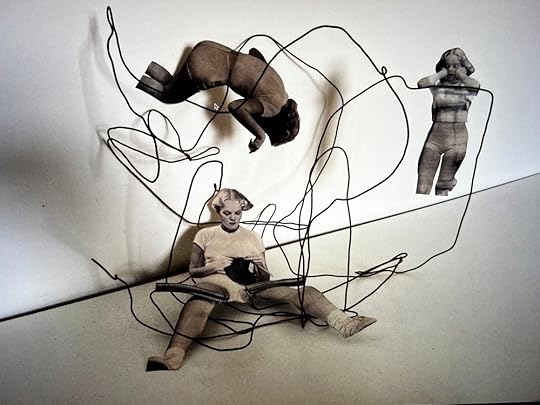 3. New organizational design.
3. New organizational design.The future does not fit in the containers of the past.
Most organizations are designed for yesterday or today and not tomorrow.
If strategy changes and new people and companies are hired the biggest mistake that many make is tucking in tomorrow under today or yesterday.
Which defeats the purpose of the acquisition and dilutes all the strategic thinking.
New strategy requires new approaches on how a company is organized.
Principles that drive re-organization should be focused on maximizing customer benefit, ensuring friction-free collaboration that minimize duplication and aligning decision making with the right incentives.
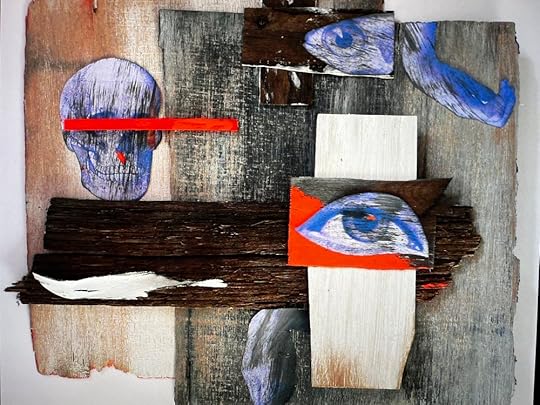
Graphic by interdisciplinary contemporary artist Martha Haversham
4. Buy-in.Too many firms after the first three steps of strategy, M&A and Re-organization believe their work is done and bring out the balloons and the posters and press releases.
Michael Tyson said, “Everyone has a plan till they get punched in the face”.
Boards and leadership of firms come quickly to the realization that everything is easy until people get in the way.
Telling people that change is good, threatening them with job loss if they do not change or creating communication materials and slogans to goad them into a cult like devotion to the new dear leader or the way forward rarely works in the short run and will likely fail after the threat of flagellation fades.
Because if there is nothing in it for them, people will out-wit, out-wait, out-pretend, and out-maneuver “management”. Until then they will fill the time genuflecting and bowing and going through the monitored motions of attending the right meetings, muttering the motivational mantras and stating the slogans required.
If one wants an organization or team to grow and change, we will need to deliver answers to three questions:
Why are the recommended changes good for them?
How can it help them grow?
How do these changes impact their compensation?

Graphic by interdisciplinary contemporary artist Martha Haversham
5. Aligned Incentives.Steven Levitt of the University of Chicago in his book “Freakonomics” stated that if you want to know if a company’s strategy will work ask to see their incentive programs.
Over a decade ago magazine and newspaper publishers saw the emerging threat from digital technology and wrote grand strategy documents but few made it to the other side. Not because they were not smart but because they continued to incentivize the selling of pages and the old ways of doing the business. Power, promotions and pounds/dollars were paid to those who controlled today’s client relationships and today’s budgets.
If the fish rots from the top, then change only happens when seismic shifts in compensation and power happen at the top.
Everyone watches this because people will do what they are rewarded to do and not what some change agent or “Vision 20XX” encourages them to do.
It is hard enough to change and totally stupid to go through the pain of change when one gets rewarded to stay the same!

Graphic by interdisciplinary contemporary artist Martha Haversham
6. Education and training.T.S. Eliot wrote “between the idea and the reality falls the shadow”.
In companies this shadow between where they are and where they want to be is known as lack of skills or know-how.
If you want people to behave differently, think differently, work differently in addition to communicating why it is good for them and incentivizing them to do so, companies must also provide ways for them to learn and grow the new skills and capabilities that will be needed.
Whether it be rotating into new groups, secondments or other strategies they must all be accompanied by some combination of self-serve, guided and enabled training.
The single biggest ROI in most companies in time will be the ability to upgrade the mental and emotional operating skills of their talent.
Upgrading skills is more cost effective, humane and culturally positive than laying off people and bringing in new teams and will be increasingly key as we enter the Third Connected Age of Blockchain, AI, AR/VR, and 5G.
It is imperative that companies have a significant commitment to learning and development agendas with senior management committed to it and members of the talent leadership being included in the highest echelons of power.
No company can grow unless its people grow.
And the day one stops learning one stops growing.
June 5, 2022
Looking Back. Looking Ahead.

Spliced imagery by Won Seoung Won
This past week in an interview by Kenneth Hein, the U.S. Editor of “The Drum” was asked to look back at what the keys to a successful career might be and then look ahead to what may come.
It was a short interview, but feedback indicates it resonated.
Have edited it down to the parts others may find useful while adding some summary points. Th entire piece can be found here.

Spliced imagery by Won Seoung Won
Looking back. Advice to the next generation on careers.The first piece of advice is that successful careers are built on a combination of luck, mentorship and aligning with the right trend.
And yes, hard work is important, but everybody works hard.
For mentorship the key is to find the best bosses or best people you can find to guide you.
In the case of aligning with the trend, try to understand something that will grow over the next 10-15 years.
And about luck, the way to maximize luck is say yes to as many opportunities as you can, even if they seem a stretch.
The second piece of advice is to never stop learning.
The day you stop being a student is the beginning of the end of your career.
It doesn’t matter how senior you are or how powerful you are. The world is changing so much that even at this stage I spend an hour-and-a-half a day learning. Invest in continuous learning and education, because otherwise you will find yourself growing increasingly irrelevant.
The third piece of advice is that eventually when you become truly successful, your success will be built on a very benign form of a Ponzi scheme.
You will be successful because the people around you are successful. And you will basically be given some sort of credit for the people around you. Therefore, make sure that you really, really invest in the people around you because that is investing in yourself in everything, from training to relationships to looking after them and helping them along with their careers. You can’t succeed, especially as you get more responsibility, unless you do that.The last thing is never taken yourself too seriously.
Be humble.
Laugh at yourself and when people say you’re full of shit, you probably are.

Spliced imagery by Won Seoung Won
Looking ahead. The state of things to come.An intense optimism about where we are relative to the state of two things.
The state of technology is one. Broadly, we’re at the cusp of one of the most radical and positive changes in technology. And it isn’t necessarily just digital technology – it’s everything from biotechnology to all the rest.
The second one is that I believe that all of us are good people, more than the newspapers claim we are. Especially if you look at the younger generations. They have the right set of values. Take those combined with the next generation of technologies and I believe we’re going to have a step change.
Two broad predictions.
One is that the next 10 years will be good for people all over the world. Not for every single person, but the world will be better off in the next 10 years than it is today because of a combination of artificial intelligence, biotechnology and the next generation of the internet – which is everything from blockchain to AR to VR to 5G.
Second is that we will look back at the way we used to be working in 2019 and in 2029 wonder how anybody worked that way. We’re about to see the most radical rethinking of work, workers and workspaces ever. And this is going to unleash more options for more people and enable many powerful ways to combine the benefits of in-person interaction and the flexibility and cost benefits of distributed work.
In sum, 1) find mentors, 2) raise your hand/take risks, 3) align with trends, 4) keep learning, 5) invest in people, 6) remember to not take oneself too seriously and 7) have a positive/optimistic attitude.
These fundamentals tend to work in every industry, every country and across all levels.
For a deeper look at career management check out Career Tools!
For more on what lies ahead see 10 predictions for the next decade.
May 29, 2022
On Understanding.
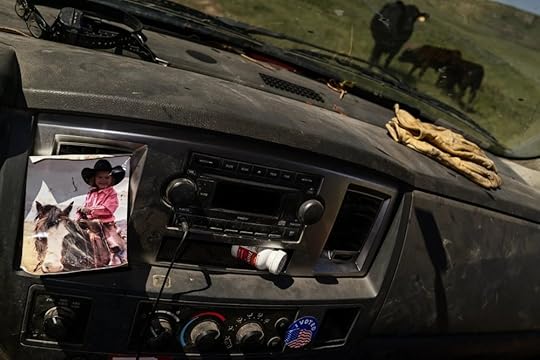
Photography by Richard Beaven
How does one understand other people?
How does one understand the world?
How does one understand oneself?
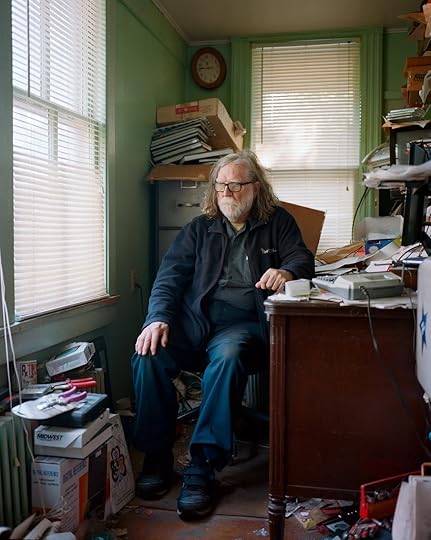
Photography by Richard Beaven
Understanding people.How do you take a measure of a person? Is it possible to understand a person?
Here are some lines from literature that say it is difficult and may be impossible
“You get them wrong before you meet them, while you’re anticipating meeting them; you get them wrong while you’re with them; and then you go home to tell somebody else about the meeting and you get them all wrong again.
The fact remains that getting people right is not what living is all about anyway. It’s getting them wrong that is living, getting them wrong and wrong and wrong and then, on careful reconsideration, getting them wrong again. That’s how we know we’re alive: we’re wrong. Maybe the best thing would be to forget being right or wrong about people and just go along for the ride. But if you can do that — well, lucky you.”
From American Pastoral by Philip Roth
And let us say we get a person right which person of the many identities and moods of that person did we just get right?
“We cannot live with only one identity. We all have many identities, they are liquid”
Olga Tokarczuk. Polish Author and Nobel Prize Winner for Literature.
And as many writers state it is sometimes hard enough to know our selves.
“Sometimes you don’t know who you are till you put on a mask”
Alexander Chee in the Short Story “Girl” written in 2015
And do any of us want to be profiled and boxed and put into clusters? None of us wants to hear that somebody has our “number”. The poet TS Eliot best verbalizes this in a stanza from one of my favorite poems “The Love Song of Alfred J Prufrock”
And I have known the eyes already, known them all— The eyes that fix you in a formulated phrase,
And when I am formulated, sprawling on a pin,
When I am pinned and wriggling on the wall,
Then how should I begin to spit out all the butt-ends of my days and ways?
And how should I presume?
TS Eliot, “The Love Song of Alfred J Prufrock”
We do not want other people to impose their stories on our lives.
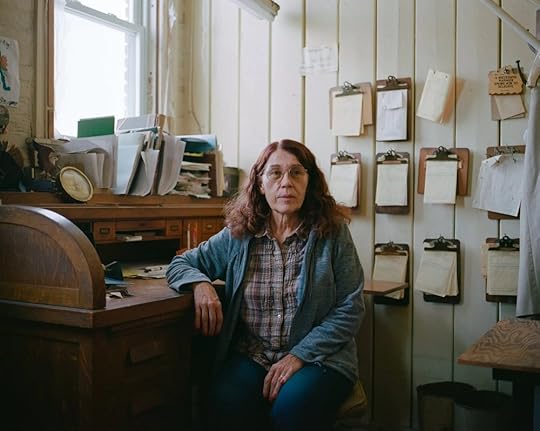
Photography by Richard Beaven
Understanding others.Emotional Intelligence can help in understand our selves and others. It can bring meaning to an age of math and reduce the “algos” which in Latin means “pain” in the algorithmically tuned streams that colonize our minds.
In the book “Untangled: Guiding Teenage Girls through Seven transitions into Adulthood” is one of the best definitions of Emotional Intelligence I have come across:
“Seeing yourself from the outside and seeing others from the inside”
Empathy is another term we often use.
The deepest empathy maybe to understand that we can never completely really understand another person.

Photography by Richard Beaven
Understanding the world.“We don’t see things as they are. We see them as we are” - Anonymous
In many ways what makes us “us”, in addition to our genetics and experiences, is what we put into our minds which include the books, movies, tv shows, music, social media streams, magazines and much more that we ingest as well as the people we meet and places we visit.
Today, the people we meet and the places we visit are very constrained and our portals to the world increasingly are screen based whether they be television, phone, tablet computer or Amazon Echo, Google Home and the ironically named Facebook Portal.
What are your portals to the world? And how do you make sure that you find ways to control them rather than have engagement and attention maximizing algorithms control them?
This is important because of the value we add and the way we make sense of the world incorporate three steps. 1) Curation. 2) Cogitation. 3) Communication.
Curation requires us to ingest a lot of information and then distill them down to parts we want to use and think about. We then cogitate and connect the dots and build a story, a thesis, and a point of view. We then find the best ways to communicate them.
But if the curation was not wide enough, deep enough, or mindful enough all the cogitating and communicating may have us following and promoting the wrong point of view.
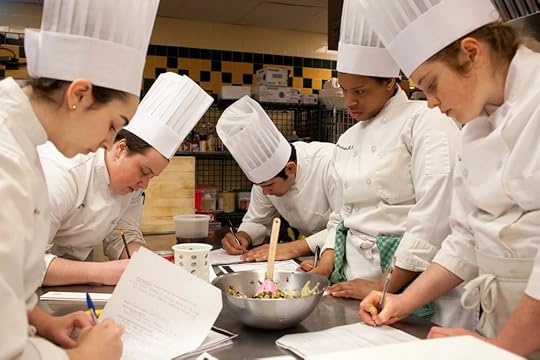
Photography by Richard Beaven
Understanding through diversity.To understand deeply one must explore widely:
a) Diversity of media types: The best thinking, ideas and expressions of people tend to span a spectrum of media types. Some people are comfortable expressing and sharing in long form writing like books or essays while others use music, film, or some other communication form. Spend time with the written word, film, interactive media, music and more. Today with the Internet there is no excuse not to look and learn far and wide.
b) Diversity of points of view: Incestuous inputs leads to still-born thinking. Unless one exposes oneself to different points of view one could end up being very surprised by the outside world. Look outside of our comfort zone, category, industry, or political and economic biases.
c) Diversity across time: History matters. Some folks like Ray Dalio of Bridgewater and many great investors and businesspeople are aware of and learn from patterns over time. The past is never the past but beats like a second heart inside each of us and within the DNA of any expertise, industry, or art form.
d) Diversity of people: Different people both provide support and push back on one’s perspectives and thinking and the cross-fertilization of ideas benefits from having different people interact. Companies and cultures that have melded the talents of different types have tended to do better than those that have not.
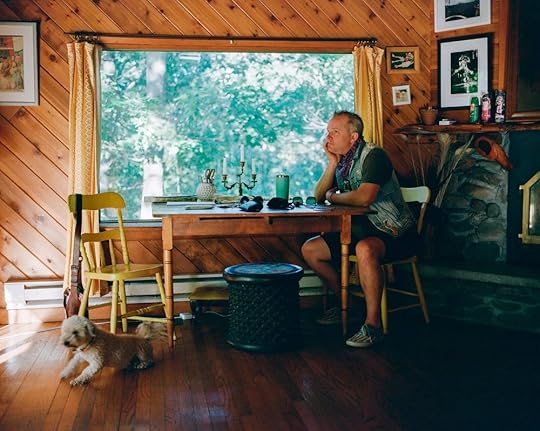
Photography by Richard Beaven
Understanding oneself.A person in a different mood is sometimes more different than two different people.
Does a person stay the same or change over time?
Some of the best writing is about internal journeys of understanding and change over time.
Here from a variety of writers are some perspectives on understanding oneself:
“It’s not that we want to find who we are but exploring as to what we can be”
“But is the self we are always looking for or trying to escape”
“We are often trying on other lives… after all this is America where you can swap out the parts of yourselves that do not work”
“She was not what she had been”
Every person is an act of creation.
Re-inventing, re-imagining, and practicing a daily resurrection.
Maybe that is all one needs to understand.
Photography by Richard Beaven (a long time colleague and now a world class photographer among other things)

Photography by Richard Beaven
May 22, 2022
Omnipresence! Omniverse!
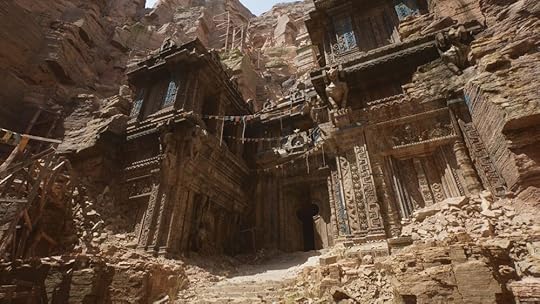
Art rendered using Unreal Engine 5.
Omnipresence: The fact of being present or having an effect everywhere at the same time. (Cambridge Dictionary)
In The First Connected Age that began in 1993 with the World Wide Web we connected to discover and connected to transact which we now call Search and E-Commerce.
In 2007 building on what had gone before we entered The Second Connected Age where we connected to everybody, and we connected all the time which we now call Social and Mobile.
As the mobile device has become the key portal even these terms of E-commerce, Search, Mobile and Social have dissolved into goo. If you buy a product while watching a video on Tik-Tok that played after a search for a product or person is that mobile or social or search or e-commerce?
It’s all of them mixed up into a goo.
The era of Digital Leakage.
As we move forward in The Third Connected Age powered by data connecting to data (AI), much faster and persistent connections (5G), new ways of connecting (Voice/AR/VR) and new trust connections (Blockchain) we will enter an era of Omnipresence.
We will not just grapple with cross-media and omni-channel but need to figure and how to live, market and engage in a world of Omnipresence.
And Omniverses.

Art rendered using Unreal Engine 5.
Omnipresence and Communication Technology.Starting from the printing press, communication technology has allowed individuals and ideas to be scaled across distance and time.
First there were newspaper and books that allowed people to project ideas primarily with words.
Photography allowed us to project image and photographs in magazines to scale those projections.
Radio and the phonograph allowed the projection of not just words but also sound.
Movies and television enabled a projection of a replica of life first in black and white and then color and then in high definition.
Search enabled us to find what we were looking for and e-commerce projected stores and bazaars into our home and let us be stores and bazaars of our own.
Social and mobile allowed us to project ourselves in all sorts of ways to everybody we wanted to at little to no cost. We could add filters and aliases and become many people and project many looks and feels.
The state of the art of all these technologies consolidated in the Gaming Industry which is bigger than the television, music, and movie industries and where individuals spend over 100 billion dollars a year to arm, dress and equip their characters and alter egos in increasingly realistic worlds.
There is a reason the 3D computer graphics game engine developed first in 1998 from Epic is called “The Unreal Engine”. We are now in the fifth version of Unreal Engine and to see its power watch this short medley of 20 renditions by AMATEURS using HOME PC’s
Impressed?
We have not seen anything yet as we take a quantum leap ahead in the next 1000 days (yes less than 3 years) driven by the technologies of The Third Connected Age.
We will be able create “multiple” versions of ourselves or edit and change elements, characters and scenes in audio and video.
Here are some “humans” and another character created with Unreal Engine.

Art rendered using Unreal Engine 5.
We will take shape and conjure up ourselves as many avatars with many voices.
We can live in the physical world, overlay data and filters into the physical world with AR or create a simulacrum of increasingly realistic worlds using Virtual Reality.
All of us who want to do so will be able to do so.
Easily and cost-effectively.
We will become omnipresent.
And will integrate a spectrum of physical, digital and virtual ways of living to create customized omniverses.
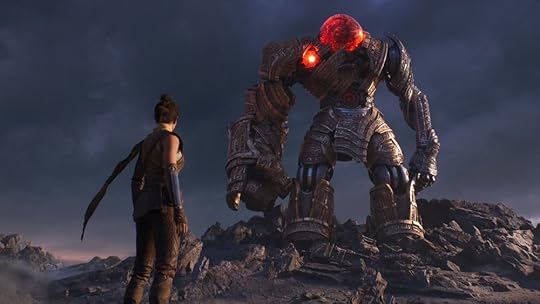
Art rendered using Unreal Engine 5.
Omnipresence and Humans.Many of you might be skeptical that even if the technology progress so rapidly will anybody but a small minority of people leverage these technologies to become omnipresent.
A guess is most of us will for three reasons.
First, Humans want to have God-Like power.
The companies that enable us to cross distance and time such as Google which allows us to find anything with Search or visit places with Google Earth, or Apple that allows us to connect everywhere projecting our images and videos or Meta that enables us to connect for free or Amazon that brings the worlds bazaars to us have become the most valuable companies in the world.
At one time it was the railroad companies and oil companies and telephone companies that allowed us bridge distance and time. Pharmaceutical and medical companies allow us to live longer lives.
These new Third Connected Age technologies will give us amazing powers and we will gravitate towards them just as we have in the past.
Second, they allow of us have multiple identities.
Our minds are imagination machines, and it has far outstripped the physical carrier of our bodies. Avatars and virtual worlds allow us to be a range of us and constantly re-invent and try on new lives and live in multiple worlds.
Third, we are about to see the greatest unleashing of human creativity as more and more people have access to new ways to express themselves, to project and share themselves and to monetize their work.
Today DALL. · E 2 (named after Salvador Dali and Pixar’s Wall-E) a new AI system that can create realistic images and art from a description in natural language. Yes type in words and art and images is rendered. Watch this for what is possible:
The future of the Internet will be increasingly owned by creators and people who consume their creation (Web 3), with new operating systems that span the physical and digital worlds (AR/VR =Metaverse), orchestrated using new trust currencies (tokens) and operated in increasingly new collaborative approaches (Decentralized Autonomous Organizations) all turbocharged with AI.
This future is being developed by millions of talented people with hundreds of billions of dollars of investment from VC’s, Private Equity, and juggernauts like Google (big on Voice and AR), Meta (VR), Apple and Microsoft (Voice, AR, and VR) and so do not be distracted by the up and down prices of cryptos or NFT’s.
In 2001 the Nasdaq crashed but broadband penetration began to take quantum jumps.
The rest is history.
It’s that time again.

Art rendered using Unreal Engine 5.
Omnipresence and Marketing.Marketers have had to grapple with digital leakage blurring the boundaries between the ways they were organized.
In 2022 why are some companies still organized by above or below the line, analog or digital, social, mobile, e-commerce or search?
Digital is hydrochloric acid that burns through the barriers of the containers of the past and omni-channel behavior versus different channels is how advanced marketers are organized reflecting the polygamous shopping and return behavior and expectations of people.
As more and more people search with Voice (in India more voice searches than text searches) and modern devices become so small that voice will be the only interface every smart marketer needs to ensure that they can provide services and expand their brand presence to the world of voice.
And as gaming and meta-verses (AR/VR) become increasingly powerful and utilized by more and more people, companies need to ensure their Brands, their sponsorships (Music acts have really begun to scale in the metaverse), Out of Home, customer service and other marketing investments need to factor in omnipresence.
There is a very good possibility that wallets that hold tokens today will become the new forms of identity and log-in replacing email and Facebook and Apple log-ins.
NFT’s and other tokens (defi, governance etc.) will not just be about art but their underlying capabilities of currency, membership, status and governance will be the building the blocks of the next generation of Customer Relationship Management (think of airline miles 2.0).
It maybe early today but analog organizations take a lot of time to adapt to the pace of digital technology which is leaping ahead so getting started early to adapt, learn, and prepare makes sense. Every person in a company particularly senior decision makers need to be familiar to both understand the challenges but also begin to understand the possibilities so they can time their investments correctly. (In the near term do not to imagine that any of this will have business impact or not be filled with mistakes).
This is the time to measure ROL not ROI.
Return on Learning and not Return on Investment.
Learn, make mistakes, build partnerships, identify opportunities today versus three years from now.
Companies that moved early with aggressive senior management attention came to benefit greatly in The First and The Second Connected Ages.

Art rendered using Unreal Engine 5.
Omnipresence and Society.Mobile, Social, Search and E-Commerce have the changed the contours of society in ways good and bad but the positives have been greater than the negatives.
Without a doubt from a breakdown in trust, increased polarization, inequality and challenges to mental health particularly of younger people have been significant and need to be addressed but few people would give up the magical powers of the last two decades of advances.
In anticipation of the potential downsides which will be surely many it will be important that industry, government and society in general anticipate, monitor and find ways to minimize the risks while retaining the benefits.
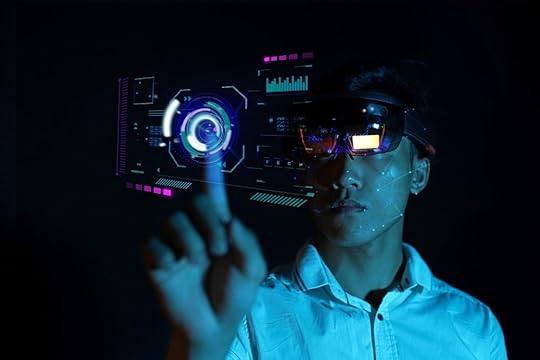 Omnipresence and Work.
Omnipresence and Work.Work, workplaces, and workers are likely to change significantly in the next five to ten years.
Covid-19 underlined that while some in-person interaction can help relationships, learning and meaning of work the days of four or five days in an office are likely to be limited to dentists and hardware engineers.
The momentum of melding in-person and distributed work will allow companies to attract and retain world class and diverse talent while managing their costs and it will allow talent to pursue multiple opportunities and optimizing a mix of work and non-work life to shifting needs and conditions.
Regardless of their occasional limitations distributed work today is enabled by mobile and computing technology and software like Teams, Zoom, and Slack.
Augmented Reality will enable workers to be more productive and powerful and Virtual Reality in time (again see the progress in Unreal Engine over the years) will create new workplaces and interaction opportunities.
Today Facebook with Horizon Work (Oculus Quest 2) headsets is taking the first steps in the area and a range of companies including Accenture which uses the term Extended Reality to describe the blend of physical and virtual reality are beginning to on-board new employee in part using the new technologies (Nth Floor).
But while these may get the news it’s nothing compared to the range of what is possible for business, graphics, design and manufacturing. Go to Nvidia’s Omniverse and click on the solution tab to see the range of what business is doing today!
Omnipresence is here and will grow enabled by breakthrough technologies, alignment with human needs and desires, the creative genius of millions and an increase in business and workplace solutions.
It’s time to be present for Omnipresence and be awake to the possibilities of the Omniverse!
May 15, 2022
Culture.
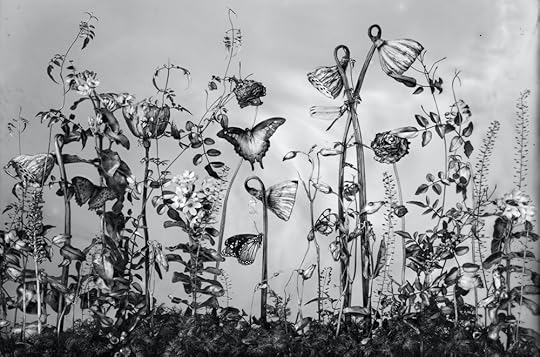
It has been written that culture eats strategy for breakfast and that culture is a great differentiator among companies.
If you query Google on “What is a good company culture?” you will get billions of results (6, 250,000,000!) and if you clicked on the links of the results on the first page you would have a list of over 100 different keys to culture.
Purpose, values, mission, respect, freedom, quality of leadership, great compensation, high growth, flexibility, diversity, multi-stakeholder capitalism and on and on the list goes.
Today as firms struggle with attracting and retaining workers they worry about culture.
A reason to get people back to the office is to make sure that there is no loss of “culture”.
But what exactly makes for a good company culture?
Study firm after firm and analysis after analysis and if one looks carefully there are four keys to culture.
A commitment to excellence.
A growth mindset.
Clarity of communication.
Connectedness.

Photography by Whitney Lewis- Smith
A Commitment to excellence.Successful companies are committed to excelling in three areas above all:
a) Superior products and services.
b) Industry beating financial results on an enduring basis.
c) World class talent.
These three are both inputs and outcomes of superior cultures and deeply interconnected.
Great people often create superior products and services that delight clients and customers driving amazing financial results.
Superior financial results allow one to create benefit packages that hire the best people and create great products and services.
Excellent products and services, success in attracting world class talent and financial results are what defines every leading company that make the list of companies that are the best places to work for or are known for their culture.
A focus on excellence makes for excellent cultures and not the other way around.

Photography by Whitney Lewis- Smith
A Growth Mindset.One of the key reasons that Microsoft came out of a decade long slumber in the five years that Satya Nadella took over as CEO was his insistence that the company evolve from “a know-it-all mindset” to a “growth mindset” inspired by Carol Dweck’s book “Growth Mindset”
The keys to a growth mindset are a focus on setting goals and learning by adapting from setbacks and progress towards the goals, working to improve oneself versus blaming others, a focus on the outside and not just the inside (e.g., stop looking at the world through “Windows”).
Companies that invest in education, learning and continuous improvement tend to rapidly iterate and adapt to market conditions.
To grow a company, one must grow minds.
Growth of skill sets, and future career potential are also key to attracting and retaining talent.

Photography by Whitney Lewis- Smith
Clarity of Communication.Companies that thrive ensure that their employees, customers and in some cases other stakeholders are constantly aware and apprised of the answer to three questions:
a) Where are we going? This is ensuring that everyone understands the strategy and vision of the company.
b) What just happened? Transparency about both good and bad happenings so that people feel fully informed of the current situation.
c) What now? Gossip and rumor love a vacuum and more information even if it is “we are figuring it out” ensures that people are as informed as possible.
Trust is at the heart of many cultures, but trust is earned by clearness of intent and transparency.
Intent is being clear of what the company, team or individual is trying to do, and transparency is explaining how one is trying to do the thing.
This way people can question and interrogate or disagree and therefore improve what one is trying to do or by knowing how one is trying to achieve the outcome individuals can suggest ways to do it better.
If one does not share intention or fail to be transparent about the path to achieving the intention, people may become suspicious or feel disrespected about not being informed or asked for input.
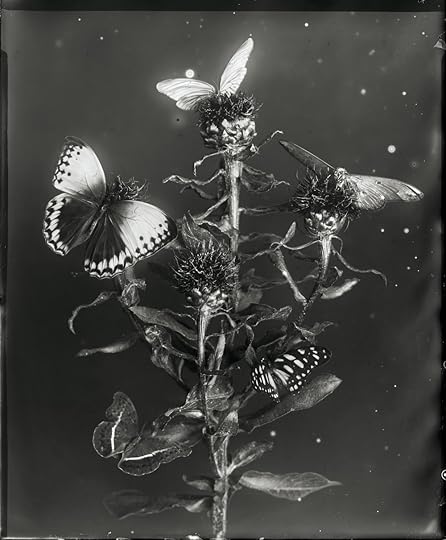
Photography by Whitney Lewis- Smith
Connectedness.In great company cultures one finds connectedness.
Connectedness of collaboration between units and teams: This is usually achieved by constant communication of what each unit does and trying to find common language, creating opportunities to build relationships and importantly incentive systems that reward how a team or country do versus an individual or unit.
Connectedness to reality/facts/truth: Great companies can run into trouble when people fail to call out the “turd on the table”, deliver bad news quickly and get people to recognize shifts in industry dynamics and trends. When “a way” or “if you speak up you will be punished” environments cause companies to miss warning signals both due to integrity issues or new competition or dis-satisfied clients.
Connectedness to something greater than the company: Some call this purpose or a belief in multi-stakeholder capitalism or ESG. The key is that companies cannot succeed in the long run without profits but also profits are not enough and everything from a dedication to the long-term well-being of their community and the ups and downs of life and talent matter.
Connectedness is not just about getting along but diversity of voices and not just faces, connecting multiple goals and combining skill sets.

Photography by Whitney Lewis- Smith
Excellence. Growth mindset. Clarity of communication. Connectedness.You do not have to run a unit or a group or a company to have an impact on its culture.
Even if your team is just you and two other folks you can improve your micro-culture by focusing on excellence, learning, communication, and connection.
And your firm is nothing, but a re-aggregation of the micro-cultures so why not drive your company culture by upgrading the culture you have an influence on?
After all the future comes from the slime and not the heavens.
May 8, 2022
Decisions!

At work and in life we are called upon to make many decisions.
Here are some thoughts on the topic.

“The difficulty in life is the choice”
The author George Moore used this phrase to describe the challenges of making a demanding decision.
Certain big choices can define a person’s character or destroy everything they stand for. The choice can lead to a life of happiness or the fall of an individual.
Similarly in business companies often find themselves in a “bet the farm” decision that could determine the trajectory of their future success.
Many decisions are difficult.
Even sometimes what seem to be inconsequential ones.

The Paradox of Choice
In 2005 Barry Schwartz wrote a seminal book called “The Paradox of Choice “whose basic insight was that industry is built on giving us more choices, but people want fewer choices.
More choices freeze people in being unable to decide what they should choose. Then after they choose, they wonder whether the other choice was better. Or they are often asked to choose without having the ability to make the right decision (like a doctor providing the risks and benefits of two or three different treatments and then instead of deciding which one makes sense delegating the decision to the patient).
If you have 15 minutes watch this seminal talk (or read the transcript) by Barry Schwartz at TED. It holds true nearly 20 years later as we have many more choices.
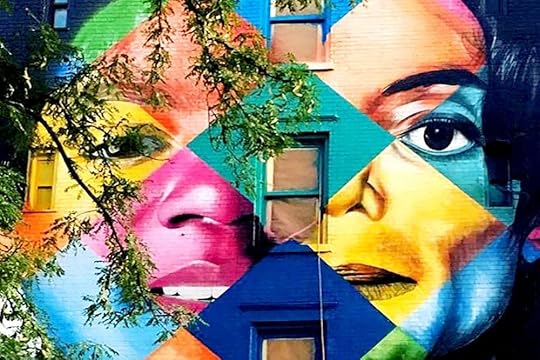
All financial decisions if perfection is the goal are always very wrong.
In hindsight every financial choice one makes will prove to be in some range of wrong.
A stock should not have been sold so early or why did not one sell it as soon as it went into decline? Why did we buy so little or why did we buy so much?
Time will reveal every allocation between different asset classes was far less than optimum. Either one was too diversified or too concentrated.
From deciding to buy a home, to locking in an interest rate time will prove us that all of us were wrong if perfection or optimization was the goal.
Instead of goals of profit maximization, perfect mix and zero regret it may make more sense to aim for “enough”, “do not risk going broke” and remembering that money is what gives us options in life but is not life itself.

If only we had made a different choice!
In “Summer Storm” a short poem by Dana Gioia the protagonist recalls a meeting two decades ago at a wedding reception with someone they connected with for a few minutes and never saw again.
Why does that evening’s memory
Return with this night’s storm —
A party twenty years ago,
Its disappointments warm?
There are so many might have beens,
What ifs that won’t stay buried,
Other cities, other jobs,
Strangers we might have married.
And memory insists on pining
For places it never went,
As if life would be happier
Just by being different.
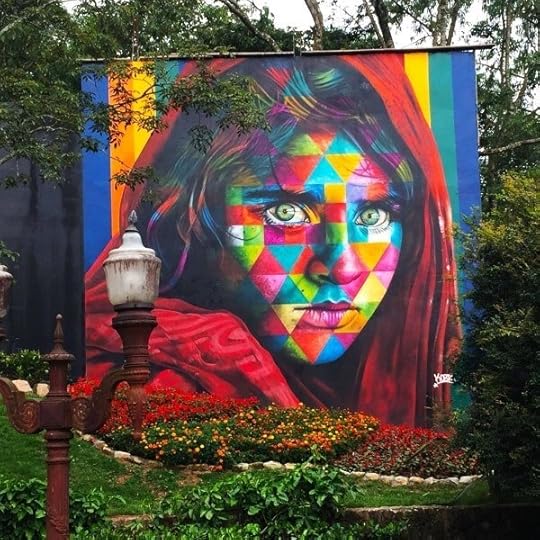
Imaginary Choices.
Moments in time that we believe were decision points but really are nothing but moments in our memory that are decisive and reverberate for the rest of our lives like …that girl in the white dress in Citizen Kane…

The Speed of Choice: High Tea or Espresso Coffee?
There are two styles of decision-making High Tea and Espresso Coffee.
Most companies and people utilize both styles depending on the situation.
The High Tea style of decision making is one of percolation and process. It takes time and many people are involved, and it goes up and down an organization.
The Espresso Coffee style is fast and focused with a bias for action.
Depending on what is being decided, the financial implication of a right or wrong decision and the ability to change one’s mind should determine which beverage preparation style is being used.
Decisions of strategy that will impact many people and cost a lot and be hard to walk back probably needs some High Tea approach. Decisions that are not interconnected to large parts of the organization, cost a little, can be stopped or reversed quickly should probably be espresso style.
Too many organizations unfortunately treat espresso decisions as high tea decisions.
Oddly as the world accelerates, we often see a great percolation where too many decisions are being group groped and slow marched.
What is fascinating is that so many small decisions are requiring so much time and people input that the human and time capital spent in evaluating the decision is many multiples of the cost or the risk of the decision being taken.
Let’s pick the right beverage style makes sense when deciding to decide.
May 1, 2022
Time Passages
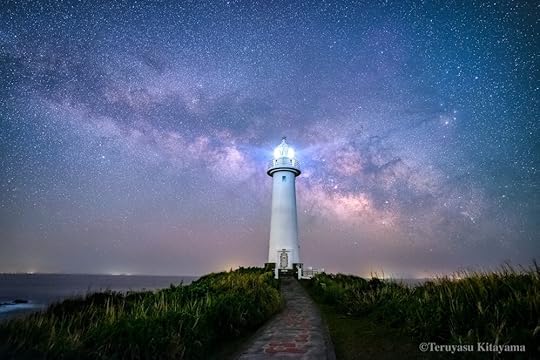
Photography by Teruyasu Kitayama
How we spend our days is, of course, how we spend our lives wrote Anne Dillard.
Tell me, what is it you plan to do with your one wild and precious life? asked Mary Oliver
Life is a journey through reality and time in search of meaning.

Photography by Teruyasu Kitayama
Time as an edge.Successful firms and people use time as an edge.
“If everything you do needs to work on a three-year time horizon, then you’re competing against a lot of people, but if you’re willing to invest on a seven-year time horizon, you’re now competing against a fraction of those people, because very few companies are willing to do that. Just lengthening the time horizon, you can engage in endeavors that you could never otherwise pursue. At Amazon we like things to work in five to seven years. We’re willing to plant seeds, let them grow—and we’re very stubborn. We say we’re stubborn on vision and flexible on details” Jeff Bezos
Three behaviors/beliefs that are common to most successful individuals and firms:
The Power of Compound Interest/Compound Improvement: The most powerful concept in gaining wealth or knowledge is continuous growth over a sustained time.
See early what others see late: Almost every successful person or company recognized a trend when it was a little stream rather than a gushing river and then committed to align with it.
Persistence: They just keep on going through adversity and setback and they remember Queen Elizabeth the First who said “Time dissolves more problems than man solves”

Photography by Teruyasu Kitayama
Time and ProductivityFive ways to make time productive.
1. Eliminate: Many people recognizing the limitations of time tend to try to do as much as possible. They multi-task and run around in a frenzy. Usually all they achieve is more multi-tasking and more frenzy. Doing more stuff is not the same as achievement. Activity is not productivity. Showing how busy you are does not show how important you are.
2. Focus: The key to doing less is to focus. Two key filters
a) Comparative Advantage: Spend your time doing things that you can do better than most people. Some focus areas are easy like being a spouse or a parent, since you should be able to do this better than other folks. However, for many of the errands you run and the assignments you take on at work, it is important to ask if you can outsource or delegate or find a colleague who is better than you.
b) Positive Outcome: Where you can choose you should only do things which give you a positive outcome. Either you 1) earn a financial reward, 2) learn something new, 3) help someone else or the team get better or 4) experience feels good. If it is not one of those four outcomes and it is avoidable, why are you doing it?
3. Scale: You can scale yourself and your impact and therefore save time. Two ways to do this is to use “leverage” and “momentum”.
Much of what we do as white-collar workers is to listen, think, create, communicate and sell. Basically with a few exceptions our success is based on how we are as communicators and sellers of ideas and points of view in building and motivating people and teams.
a) Leverage: Today technology and scheduling allow people to leverage. You can use social media, good writing and speaking skills to reach many people that you need to communicate and sell your thinking to. You are not limited to small meetings and groups. You can decide if you are senior to gather folks at the right conference or meeting versus repeating yourself again and again.
b) Momentum: The trend is your friend. To not waste your time, you need to understand the underlying trend that is driving your firm or your business and, in most cases, align with it. The world is going global. The world is going digital. Every company has a built in DNA. If you are going to go against the flow prepare for much loss of time and grief.
4. Do new things: The essence of life is new experiences. Often what we remember, and which gives time certain elongation and depth are new experiences. These do not just have to be travels or new relationships and new jobs but could be as simple as walking down a new street, eating at a new place and going to a new cultural event. If there is a way to tattoo the moment into your memory you should try too.
5. Give you time to others: One of the best ways to use your time is to use it not on yourself but on others. Nothing is as rewarding as helping other people, mentoring younger people, and forgetting about yourself in your time equation.
And in the end, it is the time that you do not measure that is the most meaningful and possibly productive of all.

Photography by Teruyasu Kitayama
Time and SuccessA definition of success is the ability to spend time the way you want to spend it or gives you joy.
To be free to use your time to pay attention to what matters and what matters to you.
Or as the late David Foster Wallace said in his mind shifting talk This is Water:
“The important kind of freedom involves attention and awareness and discipline and being able truly to care about other people and to sacrifice for them over and over in myriad petty, unsexy ways every day. That is real freedom. That is being educated and understanding how to think. The alternative is unconsciousness, the default setting, the rat race, the constant gnawing sense of having had, and lost, some infinite thing.”

Photography by Teruyasu Kitayama
Time and loss.If there are three realities to life they are learning, love and loss. Not everybody succeeds at learning or love, but everybody gets a graduate degree in loss and a doctorate when people very close die.
Joan Didion wrote two books on the loss of her husband “The Year of Magical Thinking” and her daughter “Blue Nights” which are read by many dealing with loss.
She wrote of the fragility of life noting that her husband died while eating dinner: “Life changes fast. Life changes in the instant. You sit down to dinner and life as you know it ends” and the loneliness afterwards: “A single person is missing for you, and the whole world is empty.”
And as time moves forward and people, places and hopes come and go people are shaped by what is no more.
“We are imperfect mortal beings, aware of that mortality even as we push it away, failed by our very complication, so wired that when we mourn our losses we also mourn, for better or for worse, ourselves. As we were. As we are no longer. As we will one day is not at all”
But in the end Didion notes we go on by forging new stories and finding new places and begin forgetting.
“We forget all too soon the things we thought we could never forget. We forget the loves and the betrayals alike, forget what we whispered and what we screamed, forget who we were.”
But one must forge ahead…
“Do not whine...Do not complain. Work harder. Spend more time alone.”
And to college graduates a few years ago she made the case for living deeply…
“I’m not telling you to make the world better, because I don’t think that progress is necessarily part of the package. I’m just telling you to live in it. Not just to endure it, not just to suffer it, not just to pass through it, but to live in it. To look at it. To try to get the picture. To live recklessly. To take chances. To make your own work and take pride in it. To seize the moment. And if you ask me why you should bother to do that, I could tell you that the grave’s a fine and private place, but none I think do there embrace. Nor do they sing there, or write, or argue, or see the tidal bore on the Amazon, or touch their children. And that’s what there is to do and get it while you can and good luck at it.”

Photography by Teruyasu Kitayama
Time and LifeFranz Kafka wrote “The meaning of life is that it stops”
And most of us can calculate the robust and healthy days left if we are lucky by subtracting our age from 80 (around which much begins to go wrong physically and sometimes also one may see a diminishment in mental faculties leading to a much more constrained life) and multiplying it by 365 days.
If you are 60 you have less than 7500 days. If you are 40 you have 15,000 days.
So, when someone asks you to do things without some form of fair compensation (it does not have to be money but could be learning, experience or the joy of helping) or does not respect your time, do remember you are the one paying for their dis-respect and their cheap valuation of your life!

Photography by Teruyasu Kitayama
Time and “ordinary day”.In the future the ritual of the ordinary day will be special, just as we have come to realize after months of a new way of living that the simple pleasures of free movement, meeting friends, sitting in a crowded bar, and watching a sports game were so special.
Life does not have to be lived forward and understood backward if we decide to pay attention.
Be aware of the fading moments of now.
Look around you. Watch the special quality of light or listen to the hiss of the air duct. Treasure the conversations and even the repetition and lack of differentiation of day after day.
Because one day it will not be so…
In memory of an advertising great, a Chicagoan, a friend to many, a husband and father of seven, Sean Finnegan who passed away suddenly and much too soon on Friday evening.



